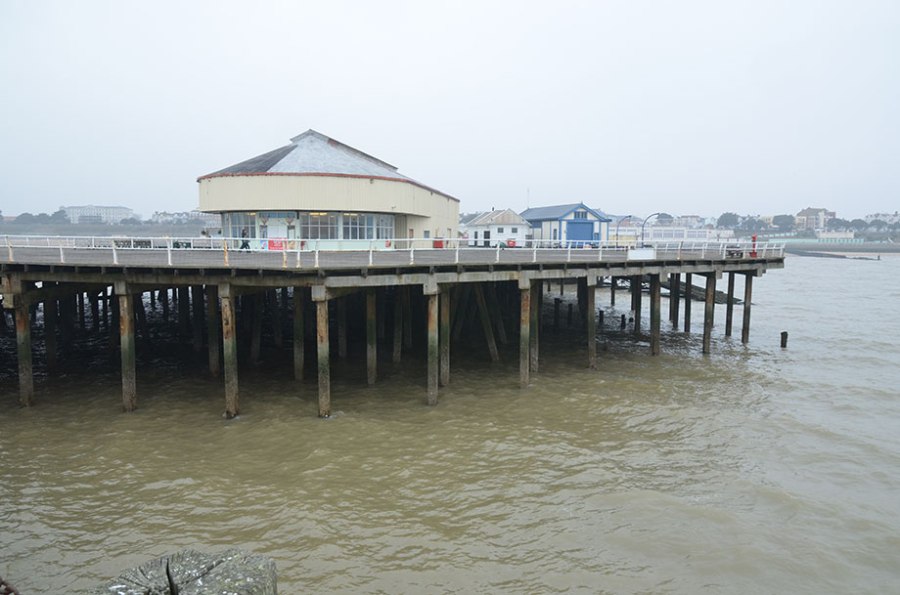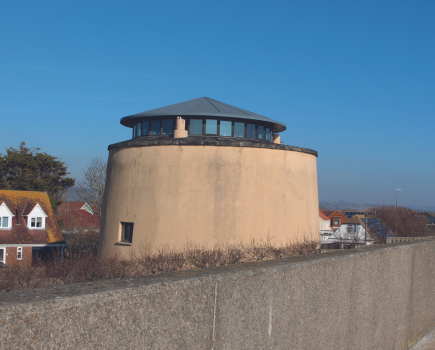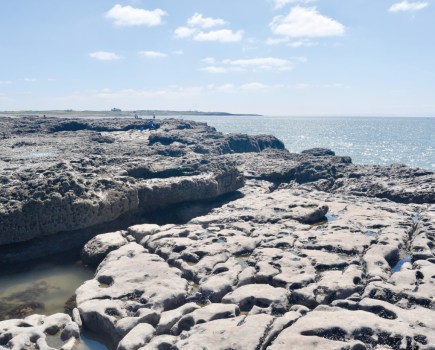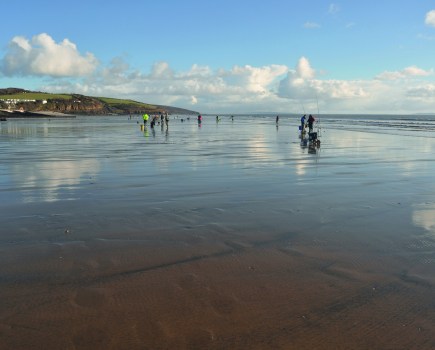Stretching out 360 metres into the North Sea, Clacton Pier has long been regarded as one of the prime fishing spots along the Tendring coastline.Stretching out 360 metres into the North Sea, Clacton Pier has long been regarded as one of the prime fishing spots along the Tendring coastline.
Words and photography by John Popplewell
 At the furthest point on Clacton Pier is a berthing arm with a chain link fence that faces out to sea and parallel with both ebbing and flooding tides. It’s the most popular part of this
At the furthest point on Clacton Pier is a berthing arm with a chain link fence that faces out to sea and parallel with both ebbing and flooding tides. It’s the most popular part of this
Shelters situated all the way along the arm protect anglers from the weather to a certain extent, but it is always worth bringing a fishing brolly too. Local anglers use a tripod or rod-rest that they can attach, via a bungy strap, to the posts in between the chain link because resting a rod on the chains can prove difficult.
Day fishing permits (£7.50) are valid from 8am-6pm and allow an angler to fish with two rods. An annual permit (£75) gives 24-hour fishing throughout the year. Pendulum casting is not allowed.
SEASONAL SPECIES
In summer there are bass, dogfish, garfish, mullet, stingrays, soles, smoothhounds, pouting, flounders and eels. In winter, the occasional codling.
TACTICS
The ebb tide can pull quite hard, especially on the bigger tides, but five or six-ounce breakout weight should hold. The flood tide is quite gentle. At high water the water will be about 18ft deep.
Bass are the main target in summer and can be caught on various tactics. Lure fishing between the pier piles produces bass to over 5lb. Black artificial eels fish best. A ragworm fished straight down the side of the pier will also catch some good size bass.
Thornback rays are caught on any part of the arm, but most anglers tend to head for the mast area at the furthest point of the fishing arm. Rays to 15lb have been caught here, so don’t forget to bring a landing net. The first three hours of the flood tide and the last three of the ebb tide are best for rays. A Calamari squid cut down the middle and whipped on size 2/0 hooks or chunk of bluey will be the top bait for rays.
 Use light rods and size 6 hooks baited with slivers of mackerel when float-fishing close to the piles for garfish. Some soles take ragworm baits on size 1 hooks fished close to the seabed. Coloured water or after dark will be the best time to target them.
Use light rods and size 6 hooks baited with slivers of mackerel when float-fishing close to the piles for garfish. Some soles take ragworm baits on size 1 hooks fished close to the seabed. Coloured water or after dark will be the best time to target them.
Early summer can see stingrays in the area and there are always one or two hooked and mostly lost because the anglers gear is not up to landing these massive fish. To target stingers, hook traces need to be at least 40lb breaking strain and a minimum of size 2/0 hooks baited with ragworms, although squid is a good standby.
Smoothhounds will appear at the end of June and can stay until September. Make sure the clutch on your reel is set loose because a hound can pull a fishing rod into the sea in the matter of seconds. A peeler crab is the best bait, but squid will catch too.
Mullet are seen under and around the pier but are difficult to catch. If conditions are right, float fish small ragworm baits or bread on small hooks. It’s a good idea to introduce some bread groundbait.
Whiting appear in large shoals in October and sport can be frantic. Use strips of mackerel or bluey fished on size 1 hooks. The whiting will stay until January if the weather stays mild.
Dabs will a lugworm that is past its sell by date. Old lugworms that has been dried out in newspaper gives off a great scent and dabs love them.
NEED TO KNOW
Getting there
Take the A120 from Colchester and the A133 to Clacton. Follow the signs for the seafront and pier. There are plenty of nearby car parks.
For ticket information, contact Clacton Pier, tel: 01255 421115.
Tackle shop
Clacton Angling, 100 Pier Avenue, Clacton, CO15, 1NJ, tel: 01255 221863.
Dean’s Tackle & Guns, 43 Pallister Road, Clacton, CO15 1PG, tel: 01255 425992.







